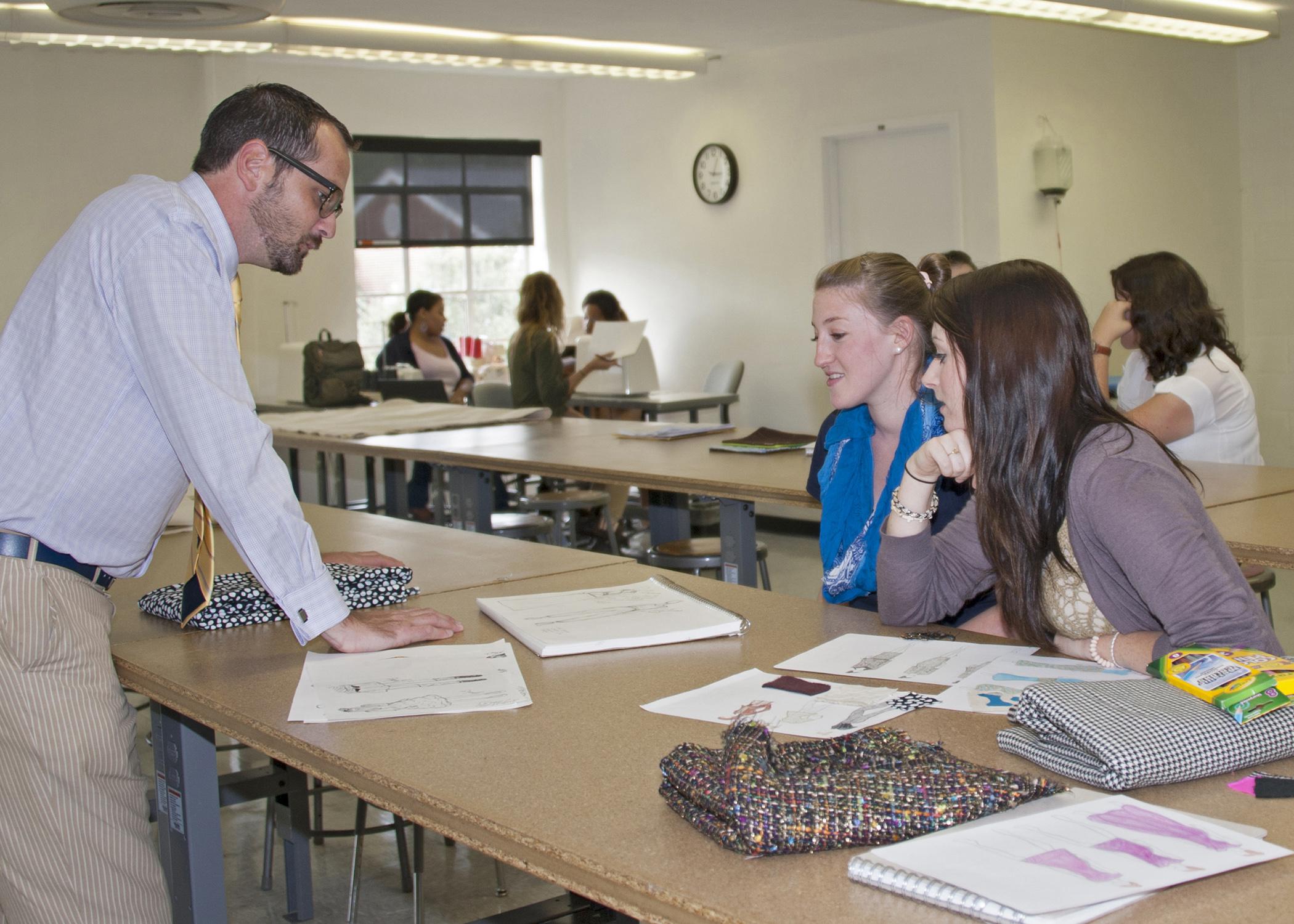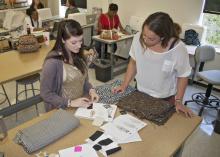Information Possibly Outdated
The information presented on this page was originally released on October 3, 2013. It may not be outdated, but please search our site for more current information. If you plan to quote or reference this information in a publication, please check with the Extension specialist or author before proceeding.
National apparel designer works with MSU students
MISSISSIPPI STATE – An apparel designer for a prominent national retailer told Mississippi State University students that the clothing industry is a good career choice since about 25 percent of the global economy is involved in it.
Ellen Sheppard is the lead apparel developer for Recreational Equipment Inc., commonly known as REI, and oversees its sportswear collections. She was on campus Oct. 2 and 3 telling students in the MSU School of Human Sciences what it takes to create a successful career in this field.
“Everywhere you live in the whole world, people wear clothes, they sell clothes, they buy clothes, and they make clothes,” Sheppard said. “Wherever you are, you are almost always playing into the apparel industry in some way.”
Sheppard, who is originally from Texas, majored in costume design at the University of California at Santa Barbara. She first worked in costume design and then moved on to various travel and adventure brands, including Horny Toad Activewear, Cocona and The Territory Ahead Inc., before joining REI.
Rachel Armbruster, a junior apparel, textiles and merchandising major from Memphis, said she appreciated hearing the path Sheppard took to arrive at her current job.
“It helps me to see how someone can make it in the industry,” Armbruster said. “She told how she started out and explained how internships and assistant jobs can help you get the jobs you want.”
Sheppard said people with many combinations of skills, interests and personalities can find success in the apparel industry.
“I think a lot of people pigeonhole their concept of apparel design and think it might be a shot in the dark to major in this field and come out with a lucrative career,” Sheppard said. “There are abundant jobs to be had, and you can make great money and work with very smart people. It’s not all drawing skirts.”
Sheppard spoke to three apparel, textiles and merchandising classes about career opportunities, brand identity and product marketing. She also met individually with students in their design labs to review their work and suggest different ideas and new approaches.
Charles Freeman, an assistant professor in MSU’s apparel, textiles and merchandising program, said the School of Human Sciences received a $30,000 grant from Cotton Incorporated to help students see the connection between agriculture and textiles, especially stressing the importance of cotton production. This grant funds a competition in which students design cotton-fabric travel wear for modern travelers or research marketing concepts related to the use of cotton for travel.
“I reached out to REI, and they are very much in support of community endeavors for their employees and the company,” Freeman said. “They searched across their team for someone who would work well for the workshop. The idea was to bring in a product developer to work one-on-one with the students for the competition.”
Freeman said requiring students to design travel wear using cotton is a challenge, as the fabric has a reputation for less-than-ideal travel characteristics.
“We wanted to look at how to use cotton in travel, and Ellen was very excited to do that with the students,” Freeman said. “It’s going to be a very big challenge for them to think about cotton in this context.”
Aleysa Graham, a sophomore from Corinth, is designing travel wear specifically for plus-sized women. She showed her ideas to Sheppard for critique and suggestions.
“She’s in the industry and does this every day,” Graham said. “I don’t do this every day, so her feedback is valuable.”
Phyllis Bell Miller, a professor in apparels, textiles and merchandising, explained how the competition is part of the students’ academic experience.
“We have only had one other functional design project in our curriculum, in which students designed scrubs for a new Mississippi manufacturer,” she said. “We don’t have a class in functional design yet, but with finances the way they are in the world, people need multifunctioning garments.
“This is a good way for our students to see beyond the idea of just high fashion. It may be fashionable, but it can also be functional,” Miller said.





